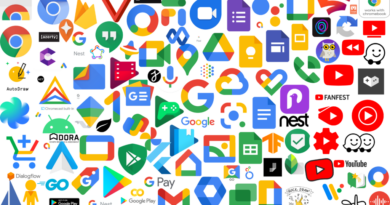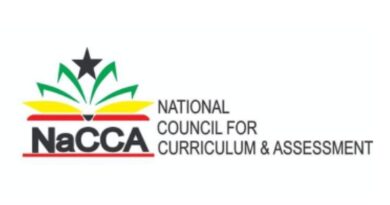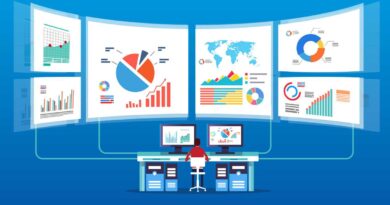Transformative Power of ICT in Special Education
ICT for Special Education: Unlocking Potential Benefits
Information and communication technology (ICT) refers to the use of digital technologies to access, process, and communicate information. In recent years, ICT has been utilized in a variety of fields including education. With its potential benefits for special education, it is no wonder that technology has become increasingly important in this field.
The Benefits of ICT in Special Education
There are several potential benefits of utilizing ICT in special education. One such benefit is the ability to increase engagement among students with disabilities. By using interactive digital tools, students can actively participate in their learning and stay engaged for longer periods of time.
An additional benefit is the ability to provide greater accessibility for students with disabilities. For example, assistive technology such as text-to-speech software or adaptive keyboards can help students with physical or cognitive disabilities better access course materials and participate more fully in classroom activities.
The Importance of Personalized Learning
Another potential benefit of using ICT in special education is the ability to personalize learning experiences. Personalization involves creating individualized learning plans (ILPs) that cater specifically to each student’s unique needs and abilities. A personalized approach can help improve academic outcomes by providing instruction that aligns with a student’s learning style and pace.
With the help of technology tools such as educational apps or instructional videos, teachers can customize lesson plans that better meet each student’s individual needs. Overall, by leveraging various ICT tools like assistive technology devices or personalized ILPs, educators can unlock greater educational opportunities for learners with disabilities than ever before possible.
Assistive Technology
Assistive technology refers to any device or tool that helps individuals with disabilities perform tasks they might not otherwise be able to do. In special education, assistive technology is a vital component in providing students with the necessary support and accommodations they need to succeed in school. Examples of assistive technology include communication devices, alternative keyboards, screen readers, and text-to-speech software.
While assistive technology can greatly benefit students with disabilities, it is important to remember that it cannot replace the need for specialized instruction or individualized support. Assistive technology should be viewed as a supplement to effective teaching practices.
Furthermore, not all students with disabilities require the same type of assistive technology. It is critical that educators work together with parents and other professionals to ensure that each student has access to the right tools and supports.
How ICT Can Enhance the Effectiveness of Assistive Technology
Information and Communication Technology (ICT) can greatly enhance the effectiveness of assistive technology for students with disabilities. For example, speech recognition software can help students who struggle with writing by allowing them to dictate their work into a computer program.
Communication devices can be equipped with eye-tracking software so that even non-verbal students have a way to communicate effectively. Moreover, ICT allows for greater customization and personalization when it comes to assistive technology.
Teachers can use online tools or software programs to create unique learning experiences tailored specifically for each student’s needs. With ICT, teachers are also able to provide real-time feedback on student progress which helps them adjust their instruction accordingly.
Overall, ICT has revolutionized the field of special education by providing new and innovative ways for educators to support their students through assistive technology. By leveraging these technologies effectively alongside traditional teaching methods, we can help close achievement gaps and promote academic success among all learners regardless of ability level.
Communication and Socialization
The Importance of Communication and Socialization Skills in Special Education
Communication and socialization skills are critical for all students, but particularly for those with disabilities. These skills help students build relationships, express their needs and desires, and navigate the world around them.
However, many students with disabilities struggle to develop these skills due to a variety of factors, such as difficulty processing language or social cues. That’s where ICT can come in.
Ways in Which ICT Can Facilitate Communication and Socialization Among Students with Disabilities
ICT can be used to facilitate communication and socialization among students with disabilities in a number of ways. For example, there are apps that use pictures or symbols to help nonverbal students communicate their needs and wants.
These apps may include pre-programmed phrases or allow users to create their own messages by selecting pictures or symbols from a library. In addition to communication tools, there are also social skills training programs that use virtual reality simulations to teach students how to interact with others in different settings.
These simulations can provide a safe space for students to practice their social skills without the fear of judgment or rejection from peers. With the help of ICT tools like these, students with disabilities can develop the communication and socialization skills they need to thrive both inside and outside of the classroom.
Individualized Learning
Understanding Individualized Learning Plans (ILPs) in Special Education
Individualized learning plans are an essential aspect of special education. These plans are tailored to meet the unique academic, social, and emotional needs of each student with a disability.
ILPs are comprehensive and take into consideration the students’ strengths and weaknesses. The development of an ILP is a collaborative process that involves teachers, parents, and the student themselves.
The plan includes clear goals for academic achievement, social interaction, and emotional development. It also provides accommodations to help students overcome challenges that may hinder their progress.
Using ICT to Create Personalised ILPs for Students with Disabilities
ICT has revolutionized special education by providing tools that can be used to personalize learning experiences for students with disabilities. Assistive technology can help students overcome physical or cognitive barriers that may impede their progress. For instance, text-to-speech technology can help students who have difficulty reading or comprehending text.
ICT tools can also be used to collect data on student performance, which can then be analyzed by teachers to inform the development of an individualized learning plan. For example, electronic portfolios can be used to track a student’s progress over time and provide insight into their strengths and weaknesses.
Moreover, ICT can be used as a platform for collaboration between educators and parents in developing personalized plans for students with disabilities. This ensures that everyone involved has access to the same information about the student’s needs and capabilities, leading to better outcomes for all parties involved in the education process.
Accessibility
“Breaking Barriers with Technology”
Accessibility is a crucial aspect of special education. It ensures that all students, regardless of physical or cognitive ability, have equal opportunities to learn and participate in educational environments. ICT has the potential to improve accessibility for students with disabilities in a variety of ways, including through the use of adaptive software and text-to-speech technology.
Adaptive software is designed to assist individuals with specific needs or limitations. For example, screen readers are used by individuals with visual impairments to read aloud the contents of a computer screen.
Additionally, speech recognition software helps individuals who may have difficulty typing due to physical disabilities. These types of adaptive technologies are incredibly helpful for students who need them, as they can help level the playing field so that all students have access to information and communication tools.
Text-to-speech technology is another useful accessibility tool provided by ICT. This technology reads textual content out loud using synthetic voices, enabling individuals who may struggle with reading comprehension or have visual impairments to access written information more easily.
Text-to-speech can be particularly beneficial for students who are unable to read on their own or require additional support when reading material in class. By leveraging these technologies within educational environments, barriers faced by disabled students can be broken down and they can participate fully in their learning experiences.
“Making Education Accessible”
There is no doubt that technology has enabled access on an unprecedented level for people with disabilities over the years. With ICT’s continued development comes increasingly sophisticated solutions for those in need throughout all regions of society. One way this has been done is through online platforms which provide tailored educational packages specifically designed for various disabilities and conditions such as dyslexia or autism spectrum disorders (ASDs).
The availability of such resources has made it easier than ever before to provide individualized educational programs that cater specifically to the needs of students who may have otherwise been left behind. In addition to these programs, ICT has also enabled teachers to create more inclusive classrooms by providing greater access to information.
For example, the availability of electronic textbooks and learning materials allows teachers to provide students with instant access to resources at all times. This means that students can learn at their own pace and read/review material as often as needed without any physical limitations holding them back.
ICT has also made it easier for educators to provide adaptive technology and text-to-speech solutions which can make learning more accessible for those with disabilities. By utilizing these technologies in the classroom, teachers can ensure that all students have an equal opportunity to succeed and learn without limitation or discrimination based on ability.
Teacher Training
The Need for Teachers to be Trained on How to Effectively Use ICT in Special Education
It’s important for educators to understand how to use Information and Communication Technology (ICT) effectively in special education classrooms. While technology has the potential to significantly enhance the learning experience for students with disabilities, without adequate training, teachers can struggle to integrate these tools into their curriculum. One of the biggest benefits of using ICT in special education is that it can help teachers differentiate instruction and create personalized learning experiences.
However, this requires a certain level of proficiency with the technology being used. Additionally, many students with disabilities have unique needs when it comes to using technology – educators must be trained on how to identify these needs and provide appropriate accommodations.
Examples of Training Programs Available to Educators
Fortunately, there are a variety of training programs available that can help teachers develop the skills they need to effectively use ICT in their classrooms. For example, the International Society for Technology in Education (ISTE) offers a series of courses focused specifically on technology use in special education.
These courses cover topics like assistive technologies, creating accessible digital content, and developing individualized learning plans using technology. The National Center on Accessible Educational Materials (AEM) also provides professional development opportunities for educators looking to improve their use of ICT in special education settings.
Their offerings include online courses designed to help teachers understand accessibility standards and create accessible materials, as well as webinars focused on specific topics like reading comprehension strategies for students with visual impairments. By taking advantage of these resources and others like them, educators can gain the skills they need create inclusive classroom environments where all students have access to high-quality educational materials through the effective use of ICT.
Challenges and Limitations
The Challenge of Implementing ICT in Special Education
While there are undoubtedly many benefits to using ICT in special education, implementing these technologies can be a challenge. For one thing, not all schools have the resources to provide students with the hardware and software they need to make full use of these tools. Even if a school does have the necessary resources, there may be logistical challenges involved in integrating new technologies into existing curricula and workflows.
Teachers may need additional training on how to use these tools effectively, and administrators may need to invest time and energy into developing policies around their use. Another important challenge is making sure that ICT is used in an inclusive way that doesn’t leave any students behind.
For example, some students with disabilities may have trouble accessing certain types of technology or using them effectively without additional support. There’s also the risk that over-reliance on technology could lead teachers to overlook other aspects of education that are equally important for students with special needs.
Limitations That Can Prevent Students from Benefitting from ICT
While some students with disabilities will benefit greatly from the use of ICT, others may find it less helpful due to a variety of limitations. One major limitation is access: not all schools or classrooms have equal access to technology or high-speed internet connections.
This can create inequalities between different groups of students, perpetuating existing disparities. Another limitation is cost: even if a school has access to technology, it can be expensive to purchase or maintain specialized equipment like Braille displays or adaptive keyboards.
This could put some schools at a disadvantage when it comes to providing their students with cutting-edge assistive technologies. It’s worth noting that while many forms of assistive technology can make learning more accessible for some students with disabilities, they won’t work for everyone.
Some learners may require more intensive support from teachers or other professionals in order to achieve their full potential. Ultimately, while ICT can be a powerful tool for special education, it’s not a silver bullet solution to all of the challenges that students with disabilities face.
Conclusion
Recap of the potential benefits of using ICT in special education
The use of ICT in special education has tremendous potential to improve the learning outcomes and quality of life for students with disabilities. Assistive technology, communication and socialization, individualized learning plans, accessibility, and teacher training are all areas where ICT can enhance the educational experience for students with disabilities. Assistive technology can improve physical access to information and create a more inclusive classroom environment.
Communication and socialization skills are essential for success in life, and ICT can help facilitate these skills for students with disabilities. Individualized learning plans that leverage ICT can help teachers meet the unique needs of each student.
Accessibility is also critical in ensuring that all students have equal access to information and resources. Teacher training is essential to ensure that educators know how best to leverage technology for their students’ benefit.
Final thoughts on the future role of
Looking ahead, it is clear that technology will continue to play an increasingly important role in special education. As new technologies emerge, we will likely see even more innovative uses of ICT to support students with disabilities. However, it’s important to remember that technology alone cannot solve all our problems.
Educators must be mindful not to over-rely on technology as a panacea; instead, they should seek out evidence-based practices that incorporate a balanced approach between traditional teaching methods and technological tools. Ultimately though, we believe that when used thoughtfully by skilled educators who are committed to meeting their students’ needs through evidence-based practice-technology holds endless possibilities for transforming the lives of children with disabilities.



